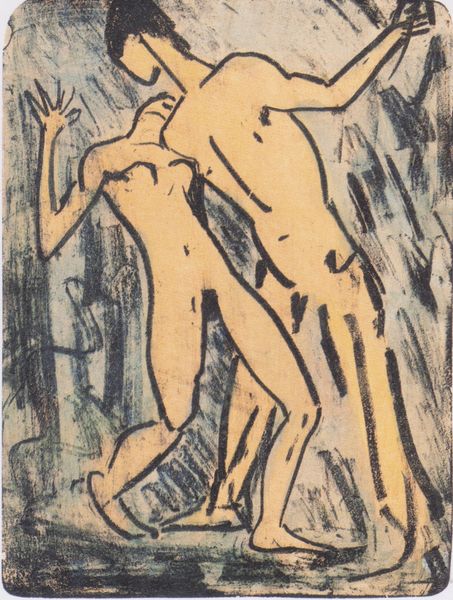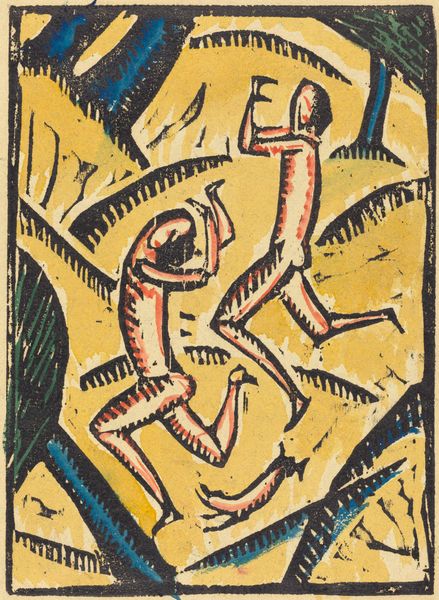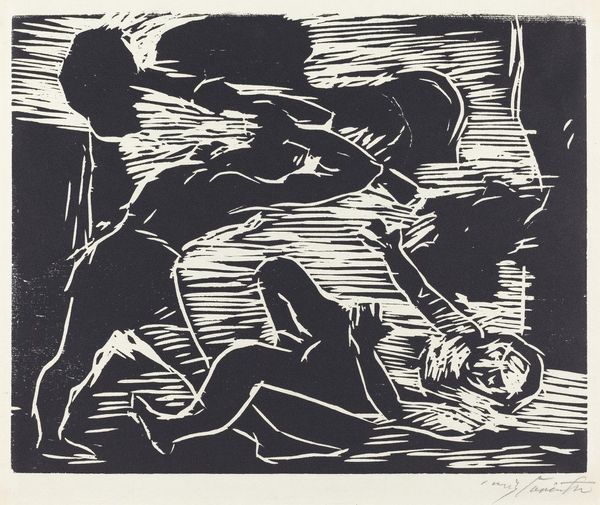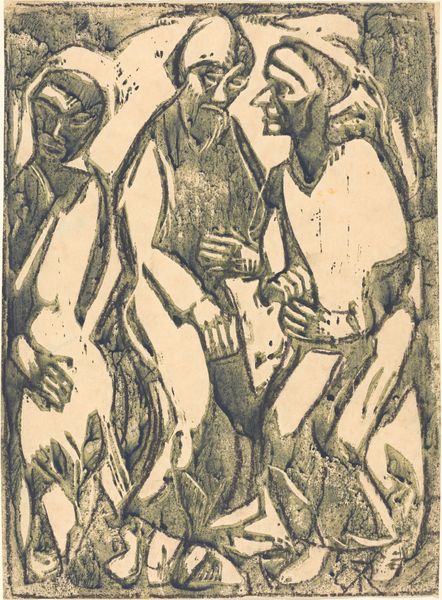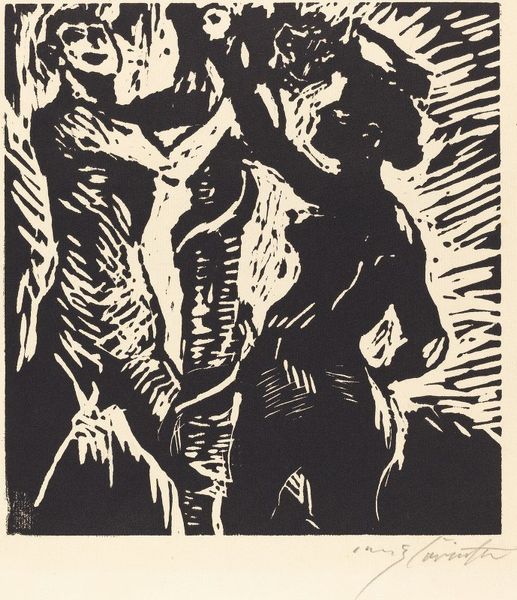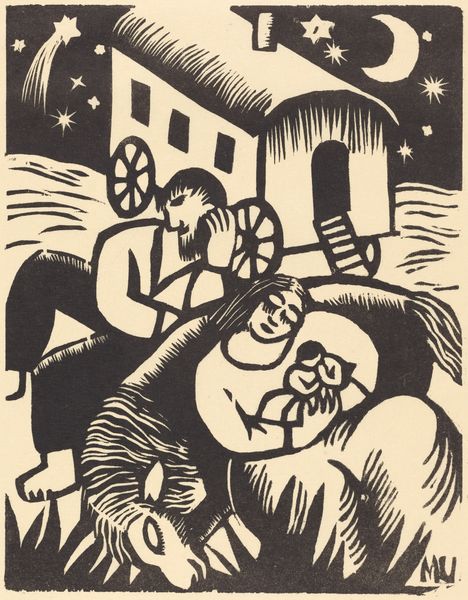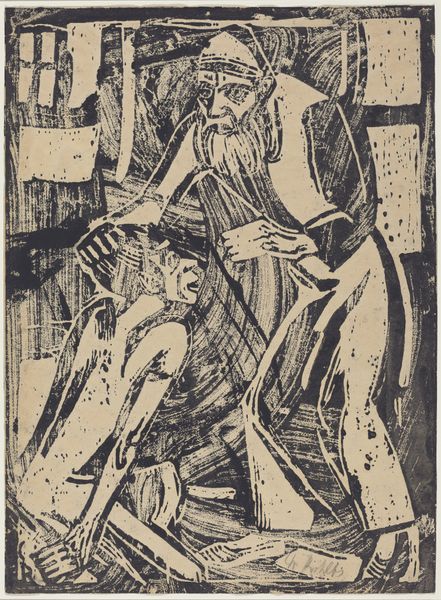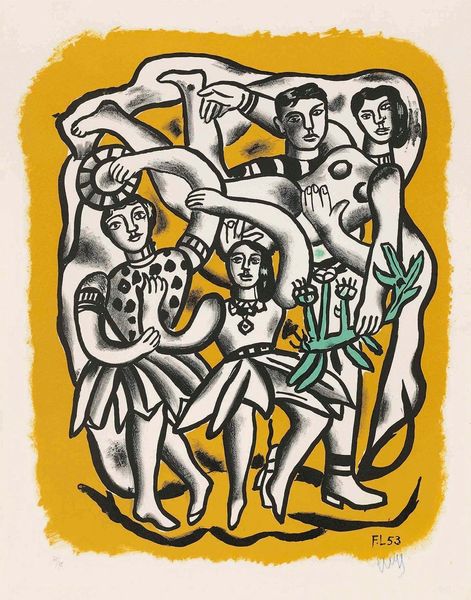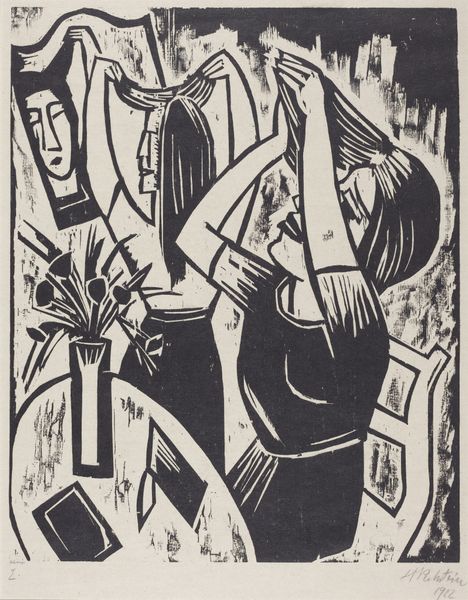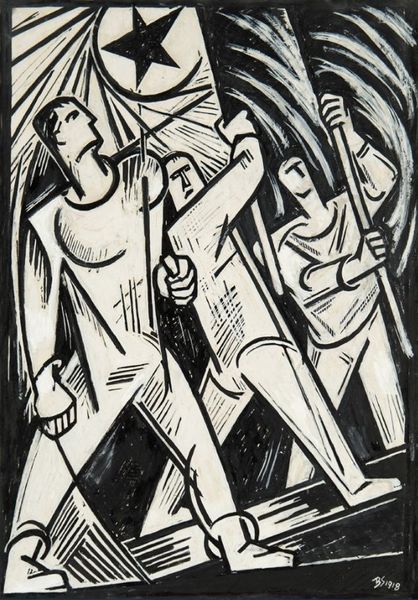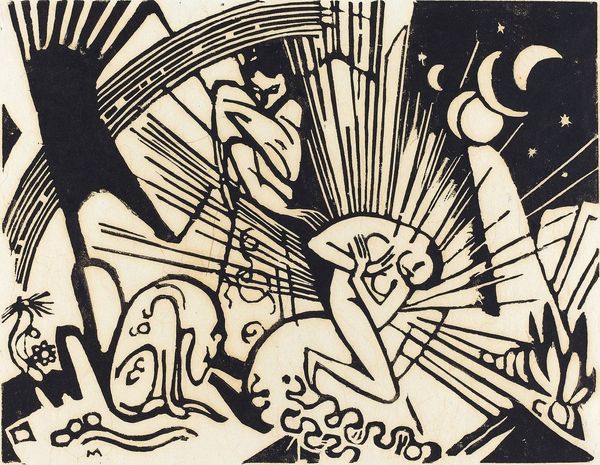
woodcut
#
portrait
#
narrative-art
#
comic strip
#
german-expressionism
#
figuration
#
expressionism
#
woodcut
#
line
#
nude
Copyright: Public domain US
Curator: Max Pechstein’s woodcut from 1922, “And lead us not into temptation,” offers a fascinating glimpse into the artist’s engagement with religious themes within an expressionist framework. Editor: This print feels so charged with raw emotion. There's a sense of struggle, a violent dance perhaps? Curator: The intensity stems, in part, from Pechstein’s process. The crude carving emphasizes the grain of the wood itself. See how that inherent texture heightens the figures' jagged edges? This directness, I think, subverts any idealized view of the body, underlining the labor behind the work. Editor: Absolutely. I also think about the power dynamics on display here. There's this vulnerable figure almost recoiling from the other. And the demons looming behind – all suggest the pressures and forces exerted by societal structures, religious dogma, the weight of morality, particularly, I think, on women. Curator: Indeed. The explicit textual element – “And lead us not into temptation"– actively prompts a dialogue. It’s not just a depiction; it's a printed statement mass-produced and made widely accessible. How does the materiality affect its distribution and potential consumption? Editor: By utilizing such charged religious text, Pechstein puts front and center how these beliefs might construct a restrictive identity for the individuals within. The stark contrast, the raw and brutal visual aesthetic—it screams about the conflict. Curator: Well put. I'd add that the woodcut medium aligns with the Expressionist desire to reject traditional academic refinement, allowing for the direct expression of inner turmoil through readily available means. Pechstein consciously embraces this tension, utilizing the materials themselves as conduits of meaning. Editor: Examining this today, in our very different era, it seems such struggles still hold weight, don't they? These questions about individual agency versus systems are strikingly pertinent. Curator: Precisely, it's a prime example of how artwork, even rooted in a specific time, resonates because the concerns about freedom, morality, and the battle with external forces remain timeless and, in many ways, constantly reshaped through culture and accessible, if controversial, texts like these.
Comments
No comments
Be the first to comment and join the conversation on the ultimate creative platform.
